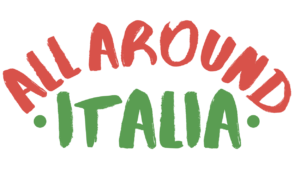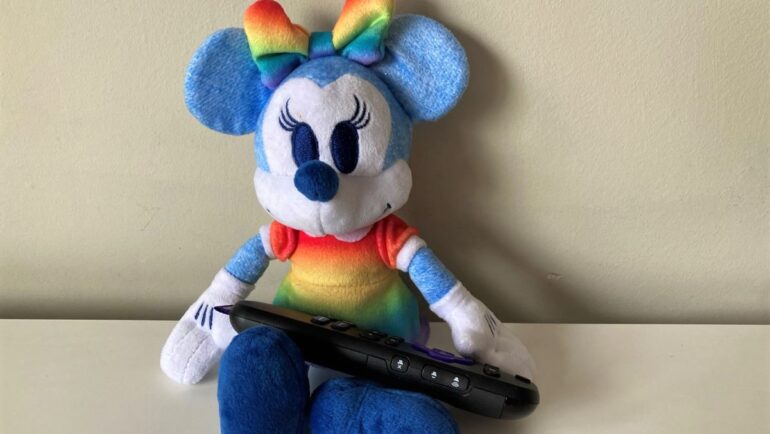Start raising your baby bilingual from Day One.
If you want to teach your baby Italian (or raise them to be bilingual in any languages!), this post outlines how to support language development in the first months of their life.
We live in Brooklyn and are raising our daughter to speak Italian (dad’s native language) and English (mom’s native language). Here, exposure to English is easy. Exposure to Italian has to be generated by us.
Through our attempts to immerse our daughter in Italian, we’ve learned that planning is crucial! If you haven’t read Prepare to Raise a Bilingual Baby, check it out before continuing.
Ok – pronti? Let’s dive into strategies to teach your baby Italian. If you are teaching your baby a different language, read on, as these tips can be applied to any language.
Table of Contents

Stick to your Language Plan
In the post Prepare to Raise a Bilingual Baby, we mention the importance of establishing who in the family will speak which language and when they will speak it.
In our family, we speak Italian at home. Outside the home, we use Italian whenever possible. With those who do not speak Italian, we speak English.
Once your baby arrives, be steadfast about sticking to your plan. To combat our tendency to drop English phrases when speaking to each other, my husband and I added a consequence – like having to wash the dishes – for whoever stops speaking Italian.
Sticking to the “rules” will get harder as your baby grows up and goes to school. So, right from the very beginning, establish habits and rhythms around language.
Chat with your Baby
Keep a Running Dialogue
Research shows that two-way speaking interactions are, by far, most important for language mastery. It’s absolutely possible to have two-way speaking interactions with your baby: their contribution will be smiles and gurgles!
What should you say to your baby?
Narrate everything you do. Tell your baby about the plans for the day. Comment on your surroundings. Explain what you’ve done after you’ve completed a task. Your baby will take in what you say and start building their vocabulary and comprehension.
Don’t forget to give your baby a chance to talk too! Ask questions, and solicit their opinion. Even if they can’t respond with words yet, they will understand you are bringing them into the conversation.
Video Chat
Oftentimes, the motivation for raising bilingual children is so they communicate with extended family members. To teach your baby Italian, what better way is there than learning directly from these family members?
If your Italian-speaking family is still in Italy, call often with Facetime and let your baby chat with them. (This is probably already happening because – of course – they’ll want to see the baby!)
We Facetime and video-chat frequently with our daughter’s nonni and zii in Italy. It is great for her to hear them speak Italian. It was also exciting that she recognized them when we brought her to Italy the first time when she was just six months old.
Meet Up
If you are fortunate to live near family and friends who speak Italian, meet up often!
If you don’t have an Italian-speaking network nearby, do your best to create one. You will likely be able to find Meetup or Facebook groups in your area to facilitate introductions.
Especially as your child gets older, it will be important for them to understand that Italian is a live language – not just isolated to your household or to a video screen. Build the relationships starting early.
Share Stories
Read, Read, Read in Italian
Hopefully, you’ve prepared by stocking your bookshelf with great books in Italian. If not, make sure to order some straight away!
Dive into the books, and read them over and over to your baby. Be enthusiastic, make funny voices and sounds. Point out what’s going on in the pictures. Pause on each page to explain more. Ask questions to your baby. These practices turn reading into a two-way interaction, which best supports language development.
Listen to Audio Stories in Italian
Although not as effective for language acquisition as reading, audio stories or audiobooks can be a great complement. They are especially nice for car rides and travel.
To listen to our favorite audio stories, check out our Spotify playlist – Italian Stories for Kids.
The Rai Play Radio and its app also has some programs on its Rai Radio Kids channel that you could put on the background for your baby to passively hear the language.
Rock Out
Listen to Italian Music
Music is a wonderful way to learn language and also culture. At pretty much any moment of the day, you can have music on in the background or make it the main event.
Not only do melodies make it easier to remember words, having fun singing and dancing together will lead your baby to make positive associations with the songs.
We love Spotify playlists. You can use ours:
You could also listen to the radio in Italian! With apps such as Radio Garden, you can easily stream any radio station in Italy (or worldwide) for free.
Sing in Italian
Even without music on, it’s great to get into the habit of regularly singing with your baby. Music is a great way to teach your baby Italian.
We recommend learning a few children’s songs from our Spotify playlists if you don’t know any songs in Italian already.
During moments of our daily routine, we sang very simple made-up songs to describe what was going on: changing a diaper, eating breakfast, getting dressed to go on a walk, going in the car, brushing teeth, preparing for bedtime.
These routine songs not only help your baby understand what moment of the day it is, but also help them build their vocabulary.
Play like Crazy
Do Stuffed Animal Theatre
Give Italian names to your baby’s stuffed animals, and start using these names from Day One! Put on shows with the stuffed animals so your baby can hear you use different nouns, verbs, and adjectives. It’s impossible to be too ridiculous with this – get into it!
Make your baby’s stuffed animals friends walk, run, jump, sleep, eat, shake hands, hug, give kisses, wave, dance, etc … Have adventures around the house all together.
Invent Games
For little babies, anything can become a game – and a great opportunity to use different words and expand their vocabulary and comprehension.
We loved to play Nascondino or “Coperto/Scoperto” – as we called it – where we would hide an object (or hide a person!) and then reveal it.
Additionally, we enjoyed playing “Che tempo fa?” where mamma would act out all the different types of weather with hand motions and noises.
“Le Emozioni” was another favorite – where we would ask “Come ti senti?”, and mamma would act out all different emotions with her face, body and words.
Make the Daily Routine Playful
Build simple games into daily life activities that focus on repetition of object names, numbers, colors, etc.
For instance, whenever we went on a walk, we played an i-Spy type of game that we call “Alla ricerca di …” where we looked for different things like trees, flowers, dogs, other babies.
Whenever we folded the laundry, we looked for one type of article of clothing at a time and yelled out its color. Alternatively, we looked for all the clothes belonging to one family member at a time and yelled out the clothing type.
While mamma tried to do some exercise, we counted the repetitions together and made silly noises every time we reached ten.
When your baby becomes a toddler, these games will be familiar. Many will still be interesting to them, and they will be able to play and respond with words. As an added bonus, they may also be interested in doing things like help you fold laundry!
Make Screen Time in Italian
Typically, parents tend to want to limit screen time for babies; and, frankly, most babies tend to have no interest in screens. They will start to be interested once they are older and more able to sit still.
From a language perspective, keep in mind that watching a screen is considered one-way exposure and has proven to be a less effective method of language learning compared to reading, singing or conversation.
If you want (or need!) to try screen time for your baby, we recommend animated music videos – such as the Hey Kids Youtube channel – so the focus is still largely on the music instead of the screen.
For older children, see our post about our favorite movies in Italian on Disney Plus.
Consider Italian in Childcare
If you need childcare during working hours, explore options like an Italian-speaking daycare (these exist in NY at least) or an Italian-speaking babysitter.
As there are only so many hours in a week, it would be ideal to be able to expose your baby to Italian even when you’re not with them.
In summary, do as much as you can to immerse your baby in Italian language.
Some of these things will be easy for your family; others will be more difficult. Our advice is to do what you can, and don’t forget to have fun! Your efforts will pay off, and your baby will start learning Italian.
Please comment below if you have other tips or ideas for teaching your baby Italian!
Do you want to meet other Italian/English bilingual families?
We are building a community! Leave us your name and location, and we will update you when next steps are possible.





